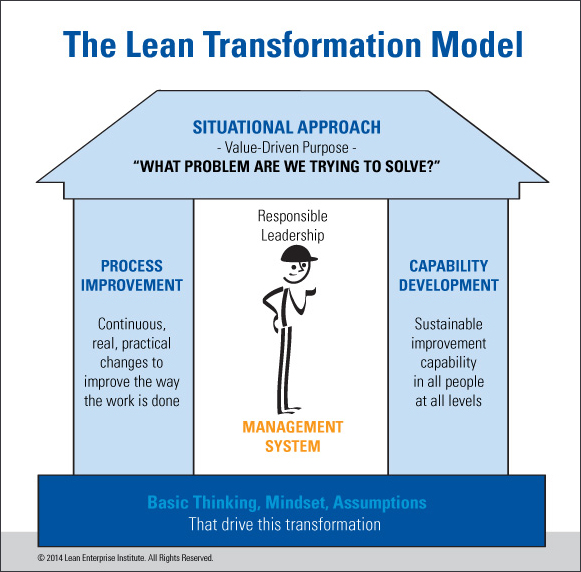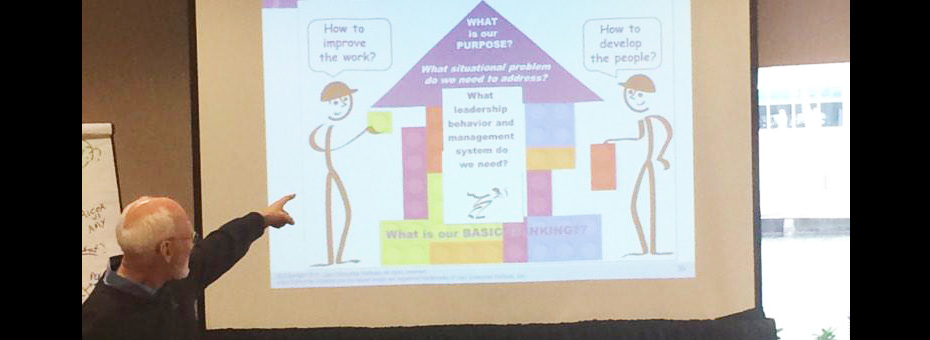Last week, you may have seen Mark Reich’s post on hoshin at LEI. For 2014, I was the lead for the following hoshin objective: to develop the Lean Transformation Model (LTM) into the framework for how LEI engages with the community. Developed by John Shook, and others over decades of working with organizations and individuals attempting to transform, LTM is a heuristic framework to be used continuously as a guide for experimentation, problem-solving, and learning – ultimately, with the goal of helping organizations become lean enterprises.
Well, 2014 has ended. And so, as was also done at the mid-point of the year, the end of 2014 was also time for reflection. Time to ask questions such as: Was the objective met? Was the plan executed? Were the targets achieved? And in all these things, why or why not?
Over the course of the year, we set out to better understand the model, its value, and its usefulness. We did this by trying to incorporate it into everything that we do and through experimenting with you, our customers, community members, and co-learning partners. Some of the LTM-based products and services we have experimented with include an explanatory video, a full day workshop, a few case studies, and several diagnostic tools – from a Failure Mode and Effects Analysis (FMEA) to a simpler current vs. future state worksheet. Also, we’ve been wondering how Porter and Sanderson (who you may remember from Managing to Learn) might transform an organization were they in more senior roles to the ones they were in when we last checked in on them. This could make for an interesting book…
 Some of our best learning has occurred while using the LTM’s five questions with real organizations attempting real, and challenging, transformation. An example that comes to mind is Kroger. Through experimentation, big and small, much has been learned about a) how to improve the value-creating work in stores in order to improvethe customer shopping experience (think: friendlier and fresher), b) how to develop the problem solving capabilities of store managers and associates, and c) what management system is therefore required in order to achieve this future state, where the focus is on getting better, every day. Exciting!
Some of our best learning has occurred while using the LTM’s five questions with real organizations attempting real, and challenging, transformation. An example that comes to mind is Kroger. Through experimentation, big and small, much has been learned about a) how to improve the value-creating work in stores in order to improvethe customer shopping experience (think: friendlier and fresher), b) how to develop the problem solving capabilities of store managers and associates, and c) what management system is therefore required in order to achieve this future state, where the focus is on getting better, every day. Exciting!
So, as 2014 became 2015 and we planned our hoshin activities for this year, we consider this objective to have been met successfully. Some individual targets were met, some were not, and we are looking closely into why. The same goes for the plan we laid out at the beginning of 2014. And this reflection is very important because of course this work is not complete. This hoshin objective is continuing into 2015 as we set out to further develop the model while also experiment more with how the model might be “implemented” effectively. Which is to say, if an organization decides to pursue a lean transformation, guided by the five questions, how might they actually get started?
What do you think? How are you using or not using LTM? We’d love to hear.




